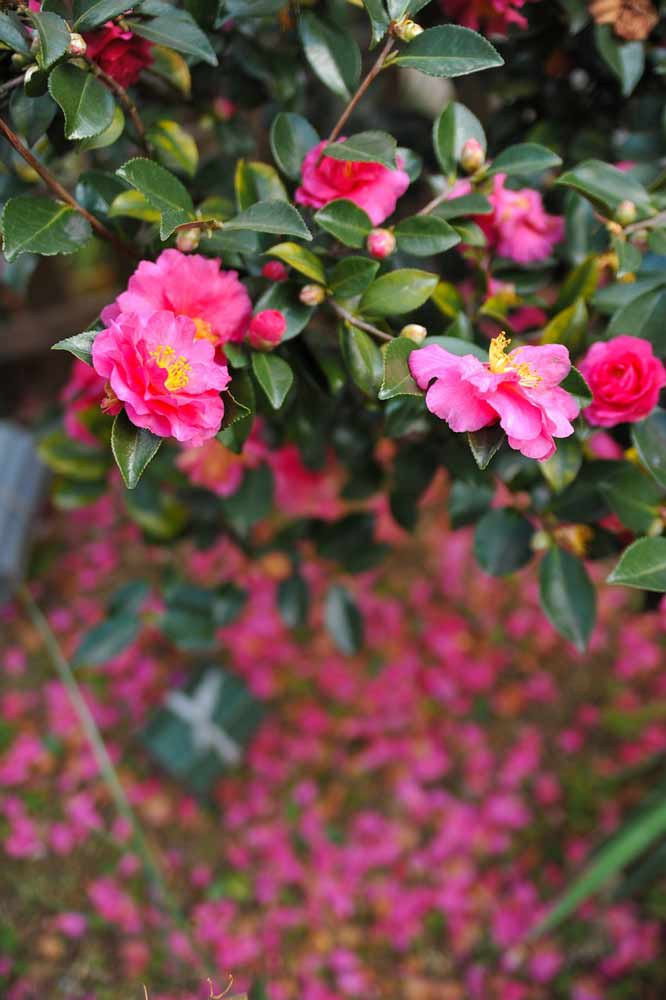There's More To Hedges Than Trimming
One of our valuable Crewcut customers wrote us this piece while looking for help with their hedges
The hedge is nature and human working together to create the ideal wall – easy, cheap and environmentally friendly. With ongoing care, it can also be beautiful. But what else can be done aside from hedge trimming to give you the best hedge on the street? North Shore Crewcut operator, Larry, says that when it comes to ongoing care, there is no ‘best’ tree species for a hedge.
“It really comes down to personal choice. If thought is put into the planting of the trees, then the hedge can be kept looking good through regular maintenance.”
If you want a low maintenance hedge, he suggests buxus as a good choice and says that, along with acmena and pittosporum, it’s very popular with Kiwis.
It’s all about the base
Planting has a big effect on how easy the hedge is to control in the future. Larry says that foresight is crucial. “You have to plant for how things are going to look in the future.”
Consider your needs are before you choose the trees. I wanted a fast-growing hedge to screen out the neighbour’s wall and I wanted a tree with light foliage that would be easy to prune and would not block out the light. Attractiveness was important because the hedge is near our front door and finally, my partner had insisted on a native. After much enjoyable research I chose pittosporum tenuifolium Wrinkle Blue, with a height after 5 years of three metres, although I’ll be keeping it at about two.
I dug a trench rather than individual holes so that I could play with the distance spacings marked on a piece of string (also, it was a lot easier on the back!). This method meant I could lay fertiliser along the trench to be reached by future root growth, rather than just under the root ball. Because of the proximity of the wall I tossed in some small bits of scoria for drainage and scattered sheep pellets and fresh compost on top. Early and continual pruning of the branches at the back ensures the hedge won’t become congested against the wall.
Too close for comfort
Surprisingly, Larry says that many hedges aren’t the result of meticulous planning but of overeager gardeners. “The main thing people do wrong is they plant things for how they look now, so they plant trees too close together and end up with a hedge.”
This strategy will be difficult to keep looking tidy if the trees have different growth rates and characteristics, however it can make for an interesting effect. I am actively hoping to incorporate an existing camellia into my new hedge. It’s at the end of the hedge line – I doubt it would have survived in a more central position.
Flower bank
Camellia hedges are very popular, with sasanqua and hybrids the best for hedging (I have a japonica Roger Hall and it’s quite woody, with slow, straggly growth). “If It’s a flowering hedge then the best time to trim depends on when the hedge comes into flower,” says Larry. Sasanqua are winter bloomers, so early Spring is the time to get out the shears or call in a hedge trimming professional before the hedge launches into its annual growth spurt. Water well because they have shallow roots but since they are also prone to root rot from waterlogging, mulching is especially important. (If you’re a camellia fan, make a seasonal visit to the impressive forest at the Auckland Botanic Gardens).
Let the light in
Larry says that when you trim your hedge depends on its growth stage and the type of tree. “Some people like to trim it in spring because it will grow faster.”
If your hedge is difficult to control, trim the trees twice yearly, in early spring and late summer. I keep a garden diary and it’s invaluable. Over winter, make a note of whereabouts your house becomes dark and gloomy due to lost light and which parts of the garden are dampest and sunless. Are they shaded by a wall of greenery? If so, you may wish to significantly cut back hedging in spring. Likewise, if you are planning to plant a hedge later this year, make a note of where your house gets its winter sun and don’t plant where it will be blocked. You’ll be glad you have the information.
Don’t leave it too late
Although common advice is to prune deciduous hedges in winter when the trees are dormant, I detest gathering fallen leaves, so I trim in early Autumn. This isn’t limited to hedges – we have a leaf blower just to cope with the wisteria. A single morning spent carrying branches and green clippings to the garden bag is preferable to the misery of raking up leaves all Autumn. You know it makes sense.
Taming the hedge hog
Have an enormous hedge, inherited from a previous owner? The kind that as a kid you had great fun making huts inside? Rampant real estate inflation has dramatically increased the cost per metre of property, but you can regain some of your precious section by cutting back heavily. We cut back our monster laurel hedge and salvaged enough space for a bike shed.
However, it’s not your own hedge that is giving you trouble but the behemoth encroaching from next door, don’t get out the chainsaw as a first response. Asked what should be done if the neighbours’ hedge is a problem, expert Larry says, “Personally, I’d go and talk to them about it.”






